2019 © OCCUPATIONAL HEALTH CLINICAL CENTER / 6712 BROOKLAWN PARKWAY, SUITE 204 / SYRACUSE / NY / 13211
PHONE: 315-432-8899 / FAX: 315-431-9528 / EMAIL: CNYOHCC@UPSTATE.EDU


SAFETY PAYS!!.......NOT REALLY
Michael B. Lax 4/26/18 Common decency would argue that if I am responsible for someone getting hurt or sick, I should also be responsible for paying for the resulting medical and other costs. The same principle should be applied to the workplace. Business owners and managers create the conditions under which ‘their’ employees work. They decide what product or service is going to be provided as well as how the work is to be done. These decisions determine what the risk of injury or illness will be, and is the reason the Occupational Safety and Health Act of 1970 declares that it is the employer’s responsibility to create and maintain a safe and healthy workplace. Business practices are not, however, based on common decency, but rather, on dollars and cents. Owners figure out how much it’s going to cost to prevent injuries versus the cost of compensating, and sometimes replacing, those who get injured or sick on the job. Compensation and replacement are typically cheaper. The total cost of workplace injuries and illnesses is estimated to be $249.6 billion dollars a year in the United States. Of that total, Workers’ Compensation accounts for $55.4 billion, or 22%. About $13 billion (13%) is covered by private health insurance which ultimately comes out of the pockets of a combination of individual workers and employers. The rest, $162.2 billion (65%), is financed by injured workers, their families and taxpayers.1 Employers are on the hook for only about $64 billion (26%) of the costs through the premiums they pay for Workers’ Compensation and their contribution to general health insurance. Until employers are forced to pay a much greater share of the costs of the injuries and illnesses they are responsible for causing, there will continue to be little incentive for them to pursue workplace changes that would make the workplace safer and prevent workers from being injured or sickened. Why do business owners pay such a small portion of the costs? One major reason is that only a small proportion of work related illnesses and injuries are recognized. Occupational diseases like asthma, contact dermatitis, and cancer are notoriously hidden and treated as general health conditions using health insurance, and if necessary. If disability benefits are sought for these conditions, they are frequently paid for by taxpayer funded Social Security Disability Insurance (SSDI). Even a disease that rarely has a non occupational cause like silicosis, a scarring of the lungs due to exposure to particles of silica from jobs like foundry work or granite counter top cutting, only finds its way into the Workers’ Compensation about a third of the time. Even acute injuries where the link to work is much more simple to see are often treated as non work related. The barriers to recognizing a health problem as work related are tremendous. They include reluctance on the part of workers to admit they were injured at work or to suggest their symptoms might be caused by something they work with. Many workers are anxious to avoid any action that might antagonize their employer or threaten their job. Its better to just keep things quiet and not rock the boat. Employers are interested in keeping their costs low and avoiding hassles that interfere with getting things done at work. Their interests are aligned with those of their Workers’ Compensation insurance carrier, and the practical result of their shared approach is to attempt to deny as many claims as possible, preventing them from being compensated and from being identified. Those interests are also reflected by a Workers’ Compensation system and process that upholds many of their denials, and makes the process so burdensome for the injured worker that many claims that should be compensated are dropped or denied. Another reason for the poor identification is that all injured workers must have their condition diagnosed by physicians who are poorly trained in the identification of occupational injury and disease. Doctors receive minimal training on their role in helping their patients access Workers’ Compensation benefits leading to frustration and ineffectiveness. They are uninterested in participating in a Workers’ Compensation system that delays their payment, requires them to continuously defend their medical decisions, prevents them from practicing good medicine by denying and delaying testing and care, and sometimes drags them into court to have their opinions picked apart. Finally, there is the overarching problem of lack of knowledge that handicaps all of the participants in this arena. Chemicals and other materials are constantly being introduced into workplaces without being tested for their potential effects on human health. As a consequence, it may take years of exposure to large numbers of workers, before a pattern of harm can be discerned. Even when occupational injuries and illnesses are recognized, however, they do not necessarily lead to preventive efforts by employers. There is no feedback loop between Workers’ Compensation and the workplace. Neither insurance carriers, nor the Compensation Board require employers to make workplace changes after injuries or illnesses, even when a pattern of them is discerned. And the threat of being meaningfully penalized by OSHA or a state regulatory agency is extremely low and does not act as a deterrent. OSHA’s resources are stretched thin and it would take the agency over a hundred years to actually inspect all workplaces. Even when OSHA cites a company for violations, the fines are typically low. Most employers can fly below the radar and not be too concerned about a possible inspection. Even though they pay such a small proportion of the costs of workplace injuries and illnesses, employers have continuously sought to reduce their responsibility even further. Unsurprisingly these cost reduction strategies have avoided serious attention to preventing work related injuries and illnesses through improvements in workplace conditions. Workers’ Compensation reform has focused, for the most part on limiting benefits to injured workers, limiting conditions recognized as work related, and requiring injured workers to get care from doctors chosen and paid for by their employer. Reining in health care costs and improving productivity has generally followed an individual responsibility approach, encouraging workers to get healthy through lifestyle and behavioral changes, and penalizing those who don’t. This approach ignores the potential contribution of working conditions to these problems and their associated costs. There are many ways that can be imagined to make employers pay the full, or at least more, of the costs of the injuries and illnesses their decisions have caused, and for which they should be responsible. Workplace safety will pay only when employers can no longer socialize the costs of injury and illness. 1 Leigh JP. Economic burden of occupational injury and illness in the United States. Milbank Quarterly. 2011 Dec:89(4):728-72

2019 © OCCUPATIONAL HEALTH CLINICAL CENTER / 6712 BROOKLAWN PARKWAY, SUITE 204
/ SYRACUSE / NY / 13211
PHONE: 315-432-8899 / FAX: 315-431-9528 / EMAIL: CNYOHCC@UPSTATE.EDU

































